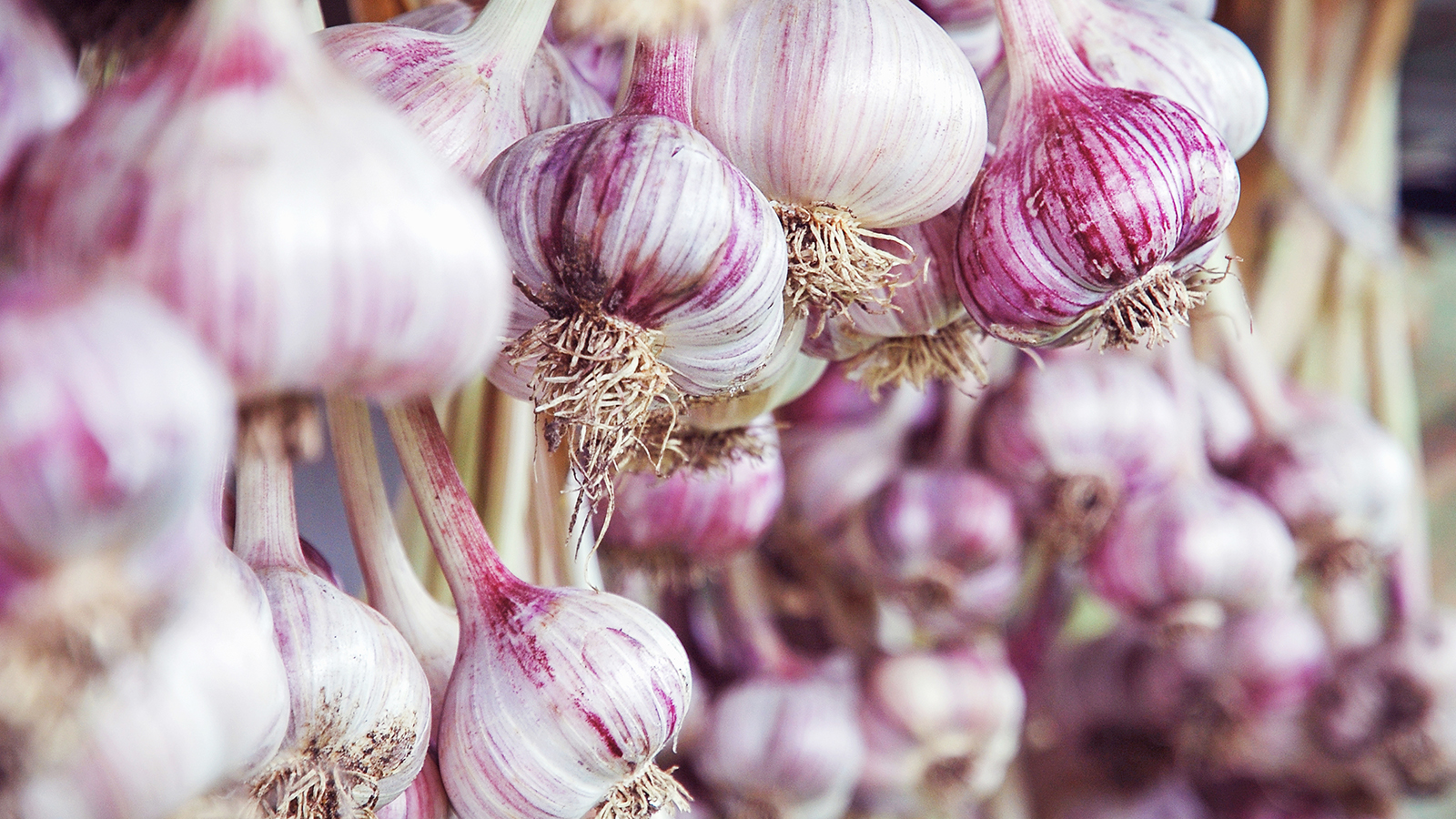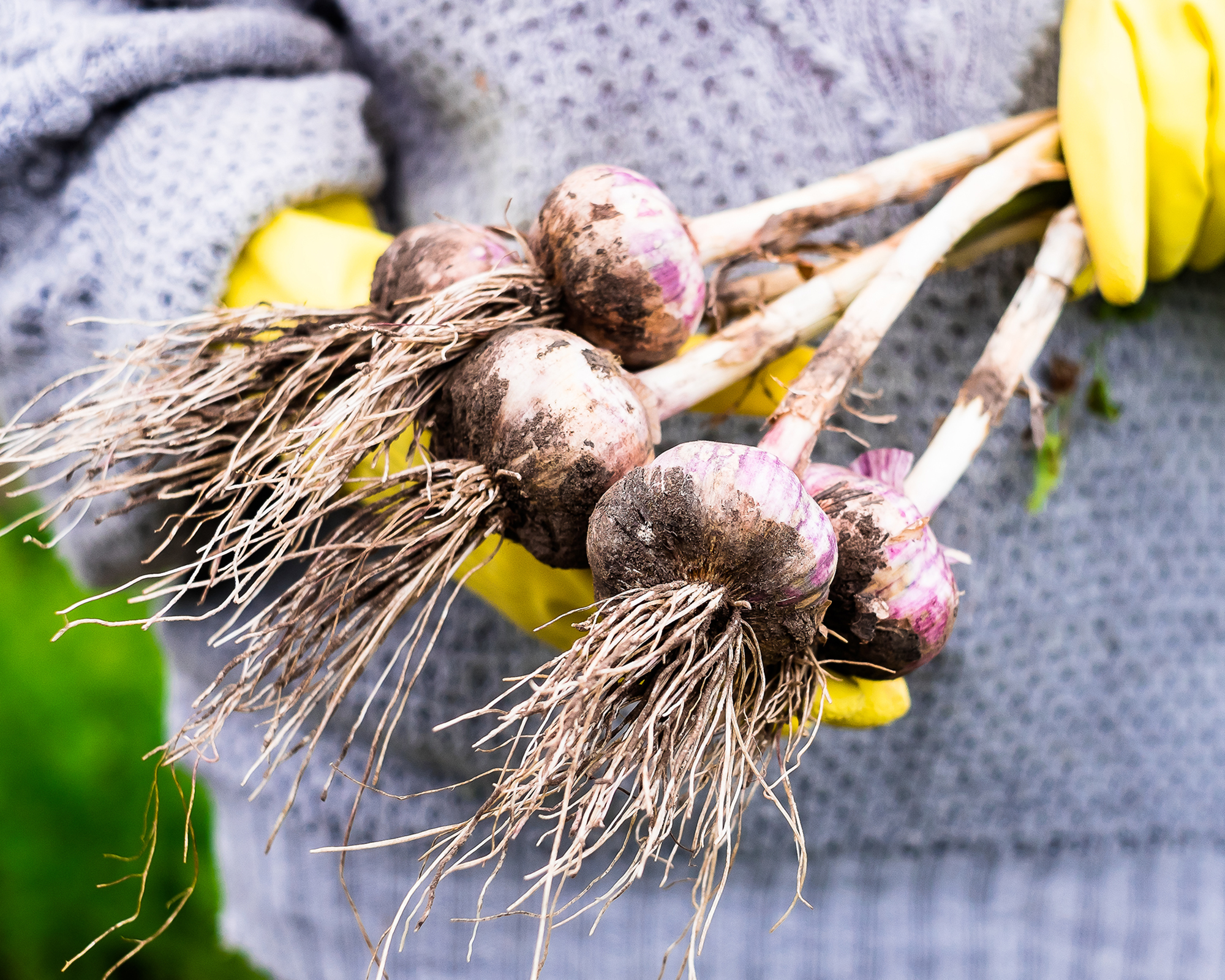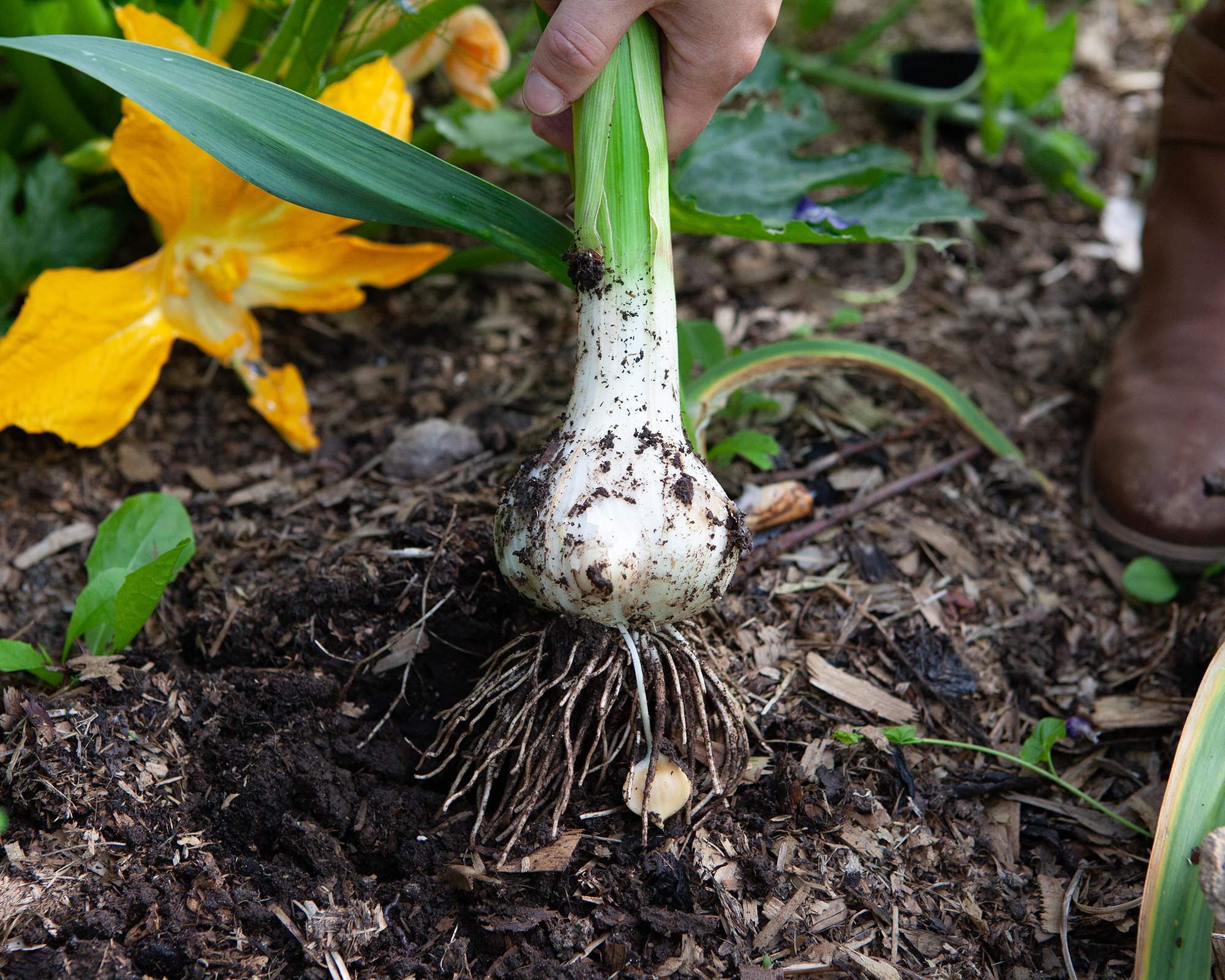Types of Garlic Explained: Best Hardneck, Softneck and Elephant Varieties to Grow
With so many garlic varieties available to grow, how do you know where to start? Compare different types for your needs and climate with our expert guide.

There are many different types of garlic you can grow in the garden, each with its own strengths – whether that’s storing well through the winter, enduring hard frosts, or bringing a rich depth of flavor to recipes. Choosing the right kind makes all the difference to both your harvest and your cooking.
Garlic varieties are generally grouped as either hardneck garlic or softneck garlic – though elephant garlic is often treated as a category of its own. All these types grow a little differently and suit different climates. So, if your goal is bulbs that last longer in storage or you’re aiming for the strongest flavor, then it pays to know the differences. You also need to think about where you live, because the local climate has a big impact when choosing the best type of garlic to grow.
Garlic has been cultivated for thousands of years, with origins traced back to the Mediterranean and beyond, and it has travelled with people across the world. Today, there are hundreds of varieties, but most fall neatly into those main types. If you’re just learning how to grow garlic, it helps to begin with a variety that’s known to be dependable. Once you've harvested your first successful crop, you’ll be full of confidence to try other types and discover new favorites.
What Is Hardneck Garlic?
Hardneck garlic (Allium sativum var. ophioscorodon) produces fewer but larger cloves, usually in a circle around a stiff central stem. The flavor tends to be stronger and more complex than softneck, which makes it a favorite for roasting. Hardnecks also produce garlic scapes – those curling flower stalks that can be harvested and cooked in their own right.
Hardnecks are tough plants that thrive in cold climates and will handle frost without complaint. But one drawback is storage. Hardneck bulbs usually last 3 to 5 months, so you’ll want to use them fairly quickly. Invest in a garlic keeper, like this Henry Watson terracotta garlic keeper on Amazon, to prolong its shelf life.
Best Hardneck Varieties
Some of the well-known groups and named varieties of hardneck garlic include:
- Chesnok Red – sweet undertones; known for keeping its flavor even after cooking.
- Chet’s Italian Red – large cloves, good yields, and excellent flavor for cooking.
- Early Red Italian – early maturing with a strong, classic garlic taste.
- German White – big bulbs with strong, hot flavor; often grown in cold regions.
- Kettle River Giant – very large bulbs with robust, full flavor.
- Persian Star – striking purple and white bulbs with a mild but complex flavor.
- Polish Hardneck – cold-hardy and flavorful, with medium-sized bulbs.
- Polish Red – spicier notes and good yield, suited to colder climates.
- Polish White – reliable hardneck with classic garlic flavor; ideally suited to northern gardens.
- Porcelain – very large cloves with a strong, pungent taste; better storage than many hardnecks.
- Purple Stripe – attractive purple-streaked skins and great for roasting.
- Red Toch – a variety from Georgia, USA, with mild, pleasant taste.
- Rocambole – rich, deep flavor and easy-peel cloves, though it has a shorter storage life.

What Is Softneck Garlic?
Softneck garlic (Allium sativum var. sativum) is what you’ll usually find in supermarkets. These bulbs have many small cloves, often 10 to 20 per bulb, wrapped in several layers of papery skin. The flavor is milder than hardneck but still versatile in cooking. Their big advantage is storage – softneck garlic can last 6 to 8 months when cured properly, sometimes even longer. They are also the best option for growing garlic in containers.
Sign up for the Gardening Know How newsletter today and receive a free copy of our e-book "How to Grow Delicious Tomatoes".
Unlike hardnecks, softnecks don’t produce scapes, and their soft stems can be braided for attractive storage. They prefer mild or warm climates and may struggle in areas with very cold winters.
Learning how to harvest and store garlic correctly will help you make the most of softneck varieties. This Mekolife herb drying rack on Amazon will enable you to dry your garlic and other herbs while keeping them safe from pests.
Best Softneck Varieties
Groups and named varieties of softneck garlic include:
- Applegate – mild and reliable; well-suited to braiding and good storage.
- Artichoke – common supermarket type with good yields and mild flavor.
- California Early – widely grown variety with mild flavor, harvested earlier than most.
- California Late – similar to California Early but harvested later, with better storage.
- Creole – distinctive red to purple cloves, with a bold taste; loves the heat.
- Inchelium Red – an heirloom from Washington State, mild early but richer with storage.
- Italian Late – dependable storage garlic with a mellow taste.
- Italian Purple – attractive purple blush on skin; classic Italian flavor.
- Lorz Italian – heirloom softneck with spicy flavor; well adapted to hot climates.
- Silverskin – stores the longest of all garlic, often up to 12 months, with a strong flavor that develops over time.
Elephant Garlic
Elephant garlic (Allium ampeloprasum var. ampeloprasum) looks impressive with its huge bulbs and massive cloves, but it isn’t a true garlic – it’s more closely related to leeks. The flavor is much milder, which can be a plus if you find regular garlic too strong. Elephant garlic can be roasted whole for a sweet, gentle taste.
Bulbs can be as large as a fist, with just a few cloves inside. It’s often grown as a curiosity or for its looks as much as for the kitchen.

Choosing the Best Garlic Variety for Your Garden
When deciding which garlic to plant – and especially when weighing up hardneck vs softneck garlic – think about your climate first. Hardnecks tolerate hard freezes and long winters, making them well-suited to cold regions (USDA zones 3 to 6). However, they struggle in very hot southern summers.
Softnecks suit warmer areas and will give you the longest storage. While best for USDA Zones 7 to 10, they can be grown further north with heavy mulch, but performance is less reliable.
Elephant garlic can grow in a range of places (USDA Zones 4 to 9), but it isn’t a direct substitute for true garlic in recipes.
Garlic is a heavy feeder, so it's important to fertilize garlic at the time of planting and beyond if you want those big, flavorsome bulbs. Use a slow-release formula, like Gardenwise 10-10-10 plant fertilizer, available from Amazon, which is ideal to use when planting garlic.
As well as climate, consider your kitchen use. Do you want bulbs to last through the year in storage? If so, Silverskin softnecks are the best choice. Are you after bold flavor for roasting or fresh eating? A Porcelain or Rocambole hardneck will suit you better.
Feature | Hardneck Garlic | Softneck Garlic | Elephant Garlic |
|---|---|---|---|
Clove count | 4 to 12 large cloves | 10 to 20 smaller cloves | 4 to 6 very large cloves |
Bulb size | Larger cloves, fewer per bulb | More cloves, smaller size | Huge bulbs, often fist-sized |
Storage life | 3 to 5 months | 6 to 8 months or longer | 2 to 3 months |
Flavor | Stronger, more complex | Milder, develops in storage | Very mild, leek-like |
Climate | Best in cold climates | Best in mild/warm climates | Adaptable, prefers mild |
Scapes | Yes | No | No |
Frequently Asked Questions
Which garlic is best for beginners?
Softneck garlic is usually the easiest for new gardeners. It adapts well to a range of soils, stores for months, and doesn’t require dealing with scapes. California Early and Inchelium Red are two reliable beginner-friendly choices that won't suffer from many garlic problems.
What garlic stores the longest?
Softneck garlic, especially Silverskin varieties, can last 6 to 8 months or more when properly cured and stored.
Which garlic is best for roasting?
Hardneck garlic, particularly Porcelain and Rocambole types, has large cloves and a strong flavor that makes it ideal for roasting.
Can I grow supermarket garlic?
Sometimes. Most grocery store bulbs are softneck varieties, but there’s a risk of disease when planting store-bought garlic, and they may not be suited to your local climate.

Amy Grant has been gardening for 30 years and writing for 15. A professional chef and caterer, Amy's area of expertise is culinary gardening.
